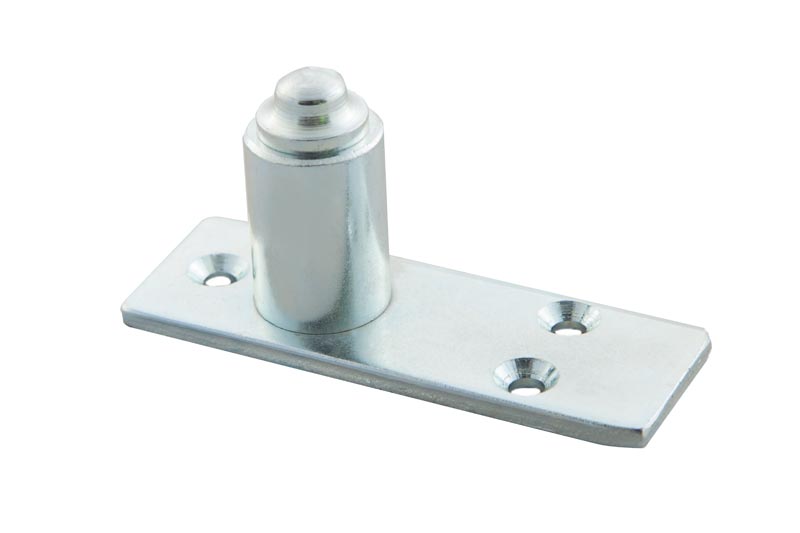
Manufacturers are responsible for building walk-in freezers to exacting standards, specifications that typically zero in on energy savings and modern features. Product owners then follow their instruction manuals, reinforcing the prowess of a glacially cooled freezer by initiating sound loading policies. Unfortunately, even the best cooling appliances are only as good as their weakest link. Adequate door sealing for coolrooms and freezers prevents an entryway from becoming this system Achilles heel.
Keeping Cold Air In and Warm Air Out
The layout of a specialized cooling chamber is fairly consistent from one design to the next. Insulated panels stop thermal losses. A ventilation system, drainage apparatus, and a refrigeration unit form the core of the system, maintaining the frosty environment. It’s an efficient arrangement, except for one glaring weak spot; a portal is open to the outside, an entryway that allows staff access to the interior. This man-sized opening cuts into one of the walls and introduces a necessary but potentially costly design flaw. The solution to the issue is to fit a door and a hefty locking mechanism, a lever and clasp design that presses against a rubberised gasket. The partnership created by the door and its tightly stoppered gasket is a seal that prevents energy losses.
Door Seal Designs are Born of Extrusion Technology
Extruded rubber and soft plastics form the best barriers. Door Sealing for coolrooms and freezers benefit from this approach because the rubber will conform to any of the eccentric outlines and contours set in the door frame and thus form an airtight perimeter that surrounds the entire door. The effect is immediate, a rejection of ambient outside air and the maximization of environmental mastery within the confines of the cold room. The extruded profile of this rubber product once assumed a simple tubular shape, but many innovative forms of the product now exist. Additionally, hinged doors and sliding doors introduce different stress characteristics to the gasket. The fixtures must take account of these detrimental influences and imbue the product with mechanical strength. A poorly manufactured gasket would crack and leak warm air into the chamber within a few months of enthusiastic door closing, but a product fabricated from a high-quality rubber will absorb the brunt of every close/open cycle without weakening.
It’s only common sense, the installation of a robust door and an airtight seal. These leak-resistant fixtures stop energy losses, prevent refrigeration units aging prematurely, and place the savings in the owner’s wallet. It’s also recommended that the equipment and its fixtures be maintained periodically, as door sealing for coolrooms and freezers can experience mechanical damage and a weakening effect, one that’s caused by temperature spikes. Opt for the best possible gasket materials and avoid the bulk of these problems.
Thousands of customers consider cooling solutions everyday. They entertain catering-centric thoughts, wondering how effectively a commodity can be cooled or frozen so that it’s extra-fresh when it reaches the kitchen. What some patrons in the cooling industry tend to overlook is that there are other industries, applications where food storage protocols bow to the need for a controlled environment. More than a fast freezing agent, better than a uniformly cooled catering chamber, these high-end solutions deliver sealed controlled environment products, mechanisms that can generate nth degree temperature mastery. But why do we need this painstaking environmental dominance? To unravel the answer, we have to take a closer look at a laboratory.
A lab in a hospital or any scientific installation is defined by its clinical surroundings. A sterile backdrop is a must, as is the separation of the environment from outside influences. Temperature changes, apart from those initiated by lab personnel, simply cannot be afforded in this scenario. Imagine all the diagnostic samples and bacterial cultures in this room. These biological materials are hugely susceptible to the smallest change in temperature. A small environmentally maintained cabinet will remove this chaotic factor from the scene, leaving the samples to grow at a consistent rate as determined by research scientists and laboratory staff. In other words, dominion over one of the most influential factors in an experimental setting has been handed over to the lab staff, leaving this highly qualified medical expert to either maintain the environment or intelligently alter applied heat so as to change the experimental variables at the touch of a dial.
Thus far we’ve talked about the alteration of temperature, the cooling of a special cabinet or walk-in chamber full of samples and pharmaceuticals, but some of these biological materials require even greater care. Airflow settings have to be managed. The humidity of the enclosed space is equally evaluated, leading to the requirement for an advanced monitoring system. It’s simply not enough to push a button, twist a dial, and hope for the right controlled environment in this carefully managed scenario. Some form of electronic monitoring samples humidity and checks temperature, returning these values to on a digital readout and thus insuring the validity of the clinical setting.
Finally, it’s a tad ironic but these laboratory environments also have a direct influence on food, although this is edible material as held in a controlled framework. New foodstuffs are evaluated for content everyday within these laboratories and regulated according to governmental bodies, such as the FDA (America) and the TGA (Australia)
C&M Coolrooms can create a custom solution for your specific needs. Talk to one of team members today.